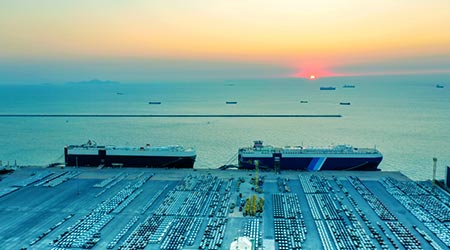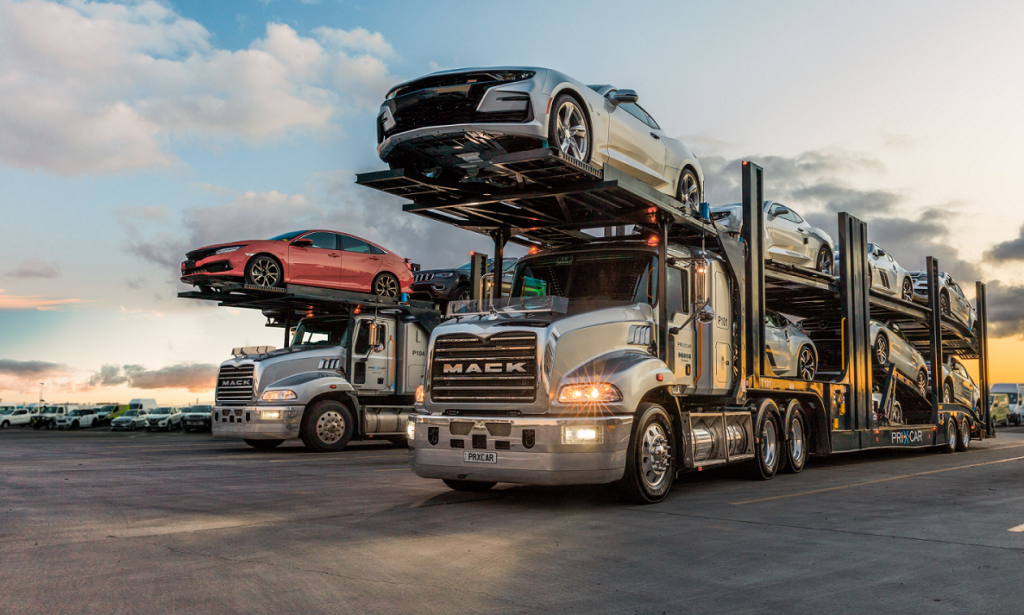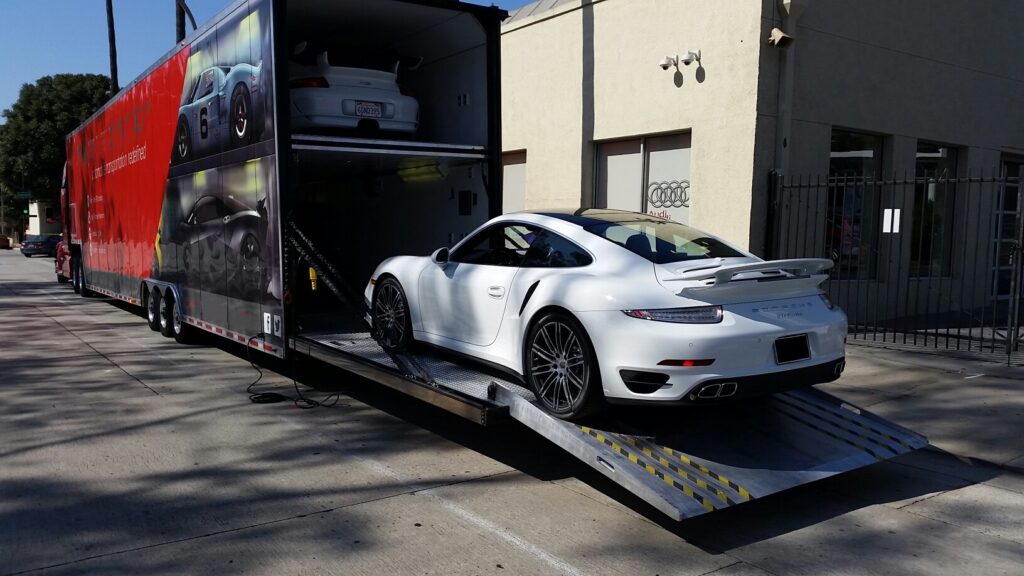Thinking about shipping your car from Texas to California? Whether you’re relocating or simply need to transport your vehicle across states, it’s important to understand the ins and outs of this process. One crucial factor that often comes to mind is the cost involved in shipping a car from one state to another. In this […]
Category Archives: Auto Transport Rates Calculator
How Many Tons Can A Bulk Ship Carry?
Bulk ships, also known as bulk carriers, are cargo ships specially designed to transport unpackaged bulk cargo, like grains, coal, ore, and more. The amount of cargo a bulk ship can carry, expressed in tons, depends on various design factors like the ship’s dimensions, DWT rating, and more. Let’s take a deeper look into how bulk ship tonnage capacity is determined Auto Transport Rates Calculator.
Determining Factors for Bulk Ship Tonnage Capacity
There are a few key factors that determine the maximum cargo tonnage a bulk ship can transport:
1. Deadweight Tonnage (DWT) Rating
Deadweight tonnage, often abbreviated as DWT, is the total weight a ship can carry when loaded to its maximum draught. It includes cargo, fuel, freshwater, ballast water, provisions, passengers, and crew. DWT is always expressed in metric tons and is considered the standard measure for bulk carrier capacity.
A bulk ship’s DWT rating is determined during the design and construction phase based on its dimensions, draft restrictions at ports it will frequent, and stability requirements. Larger DWT ratings allow a ship to transport more cargo while still meeting operational standards. Common DWT ratings for modern bulk carriers range from 30,000 metric tons to over 200,000 metric tons.
2. Cargo Hold Capacity
The overall internal volume and dimensions of a bulk ship’s cargo holds determine how much unpackaged cargo it can physically accommodate. Larger cargo hold designs allow for more cargo area and higher tonnage loads.
Modern bulk carriers are designed with multiple separate cargo holds below deck to help maintain proper weight distribution as cargo is loaded and unloaded. Cargo hold capacities can range from 15,000 cubic meters up to over 100,000 cubic meters depending on the ship size.
3. Maximum permissible draft
Draft refers to how deep a ship sits in the water. Deeper drafts allow for more submerged cargo space and tonnage potential, but also restrict the ship’s ability to navigate certain shallow ports and waterways Auto Transport Rates Calculator.
Maximum permissible draft is an important limiting factor set by the bulk ship designer based on port restrictions it must comply with globally. This draft restriction, combined with the hull dimensions and cargo hold volume, determine the ship’s ultimate load capacity.
4. Cargo type and density
Different bulk cargoes have varying densities that impact tonnage calculations. Heavier, denser commodities like iron ore translate to higher weight tonnages than lighter bulk goods.
Ship designers consider typical cargo mixes and densities when optimizing dimensions and DWT ratings. More space is usually allocated for low density goods needing higher volume capacity.
Realistic Cargo Tonnage Capacity Figures
With the above design factors in mind, here are some realistic cargo capacity figures we can expect from typical bulk carriers:
Handymax Bulk Carriers (30,000-50,000 DWT)
- Cargo hold capacity: 20,000-40,000 cubic meters
- Max permissible draft: 11-13 meters
- Average cargo tonnage: 30,000-45,000 metric tons
Handysize Bulk Carriers (10,000-30,000 DWT)
- Cargo hold capacity: 10,000-25,000 cubic meters
- Max permissible draft: 9-11 meters
- Average cargo tonnage: 15,000-25,000 metric tons
Panamax Bulk Carriers (60,000-80,000 DWT)
- Cargo hold capacity: 40,000-70,000 cubic meters
- Max permissible draft: 13-14 meters
- Average cargo tonnage: 50,000-75,000 metric tons
Capesize Bulk Carriers (100,000 DWT+)
- Cargo hold capacity: 70,000-130,000 cubic meters
- Max permissible draft: 15-20 meters
- Average cargo tonnage: 100,000-180,000 metric tons
As you can see from these examples, larger bulk carriers with higher DWT ratings, more cargo hold space, and deeper draft allowances can transport substantially higher tonnage loads compared to smaller bulk ships.
Factors Affecting Real Tons Carried
While the above figures represent maximum theoretical cargo tonnage capacity, the actual tons carried on a voyage may vary due to these operational considerations:
Bunker Fuel and Provisions
A certain amount of space needs to be reserved onboard for bunker fuel and provisions to power the ship’s engines, generators and feed the crew over long voyages. This takes up cargo capacity Auto Transport Rates Calculator.
Cargo Separation
Certain cargoes like grains need to be kept physically separated in holds using temporary bulkheads to prevent cross-contamination. This compartmentalization reduces usable cargo space.
Load Line Restrictions
International load line regulations set minimum allowed under-keel clearances for safety. Cargo cannot fill the holds completely, leaving a margin of empty space below for stability.
Draft Restrictions
Ports have certain maximum permitted draft depths. If low on arrival, it may not be possible to fully utilize the maximum cargo capacity. Ballast water needs adjustment.
Cargo Characteristics
Factors like moisture content, particle size distribution and density for some cargoes directly impacts actual weight versus volume capacities achieved.
Given these operational realities, it’s common for a bulk carrier to arrive at a loading port with 10-20% less capacity as fuel and provisions are loaded, leaving space for safe cargo transports under all conditions. Modern ship management technologies help optimize actual cargo loading.
Tonnage Capacity Trends over Time
Over the decades, larger bulk ship sizes have become the norm to maximize economies of scale in the bulk trades. Here are some tonnage capacity trends worth noting:
- In 1960s, average bulk carriers topped out at 35,000 DWT with some supermaxes at 75,000 DWT.
- By 1980s, panamax bulkers were common at 60,000-80,000 DWT, setting a ceiling until 1995 at 80,000 DWT.
- Post-Panamax designs over 80,000 DWT started appearing in 1995. Today capesize bulkers over 200,000 DWT are routine.
- Average bulk ship sizes have doubled each decade since 1960. New orders are focused on very large ore carriers and limestone ships at 200,000 DWT plus.
- Port infrastructures are expanding to accommodate very deep drafted bulk giants, allowing maximized tonnage capacities to cut unit costs.
This shows how cargo carrying potential is always pushing boundaries driven by economies of scale. Larger bulkers continue setting new tonnage records, growing key sectors like commodities trade.
Parting Words
A bulk ship’s cargo tonnage capacity depends greatly on its design, dimensions and DWT rating which determine maximum theoretical loading. Actual cargoes carried factor in bunker fuel space, stability requirements, load line rules, draft restrictions, and cargo characteristics.
Modern bulk carriers are precision engineered behemoths capable of transporting 100,000+ metric tons halfway across the world in a single voyage. Tonnage capacities will continue rising as port capabilities also progress to handle future ultra large bulk vessels. Over time, bulk shipping’s economies of scale have dramatically expanded efficient global trade in bulk commodities.
Are you planning to move across the country or maybe just need to transport your car? One of the biggest questions on your mind is probably, “how much does car transport cost?” It’s important to understand that the cost of transporting a vehicle can vary greatly depending on several factors. In this blog post, we’ll […]
Are you planning to ship a package but have no idea how much it would cost? Shipping costs can be confusing, and not knowing the right calculations might lead to overspending. But fret not! In this guide, we’ll break down the factors that affect shipping rates and show you how to calculate them accurately. From […]
Are you planning to move to Columbus, Ohio and wondering what’s the best way to get your car there? Shipping your vehicle may seem like a daunting task, but fear not! We’ve got you covered with everything you need to know about shipping your car to Columbus. From choosing the right carrier and preparing your […]
Are you planning to relocate to another country but don’t know how to transport your beloved car? Moving abroad can be an exciting and daunting experience, especially when it comes to shipping your vehicle. You want a reliable and cost-effective method that ensures the safety of your car during transit. In this guide, we’ll take […]
Attention all car buyers! Do you dread the thought of shipping your new ride from a dealership? Are you unsure where to start or what steps to take? Fear not, because we have got you covered with our comprehensive guide on 5 simple steps to ship your car hassle-free from a dealership. Whether it’s across […]
Welcome to our comprehensive guide on auto transport in Tallahassee, Florida. If you’re planning on moving your vehicle locally or across the country, this post is for you! Whether you’re a student headed back home after college, a snowbird driving south for the winter, or an avid car collector transporting your prized possession to a […]
Attention all car owners and enthusiasts! Are you planning to move your vehicle across the country but worried about the car hauling rates? The cost of shipping a car can vary significantly depending on several factors, one of which is price per mile. As a car owner, it’s essential to understand how this pricing model […]
Are you planning to relocate somewhere else? Or maybe you’ve just purchased a new vehicle, and now you’re wondering how to get it from point A to point B without adding hundreds of miles onto the odometer. Whatever the case may be, car transport in Columbus, Ohio is an excellent solution for many people. In […]
Are you a fleet owner or independent transporter trying to understand the true cost of car hauler per mile? Look no further! With fuel prices, maintenance costs, and other expenses constantly fluctuating, it can be challenging to determine the real cost of transporting cars. In this blog post, we will break down everything you need […]










